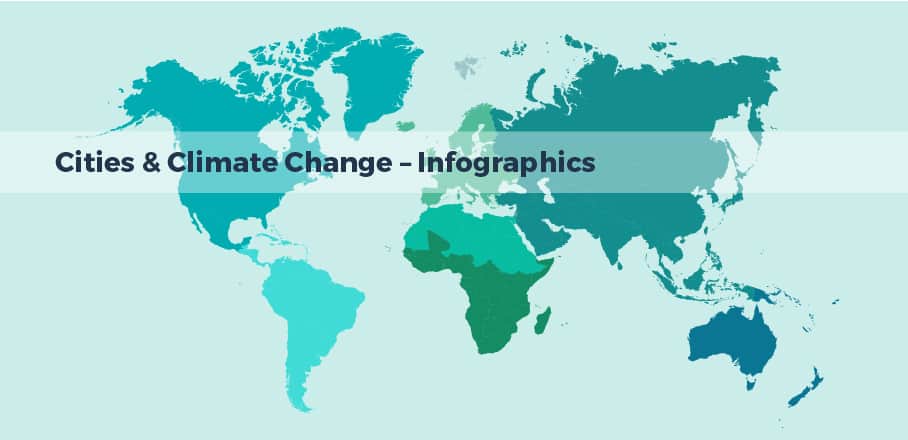Cities & Climate Change | Infographics
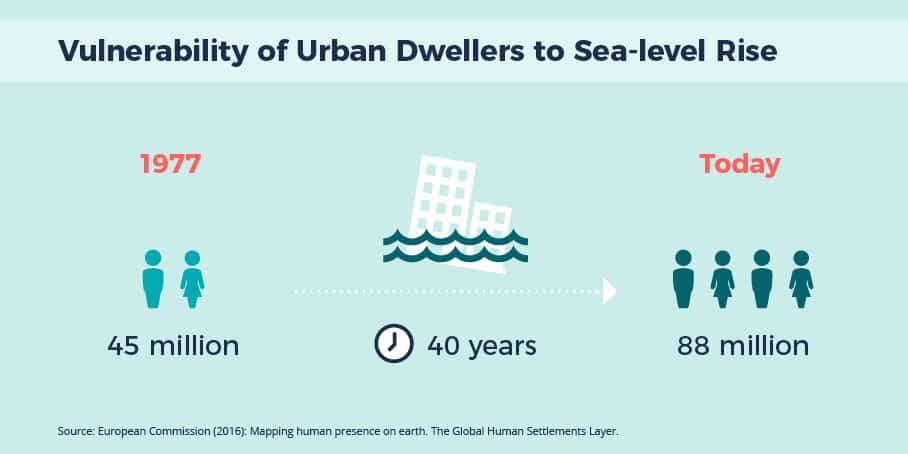
The number of urban dwellers living at sea level or below has doubled in the last 40 years from 45 to 88 million residents. The likely sea-level rise of 5 to 10 cm over the next two decades is expected to double the risk of coastal flooding in many areas. This will endanger the life and property of millions of people living in coastal urban agglomerations.
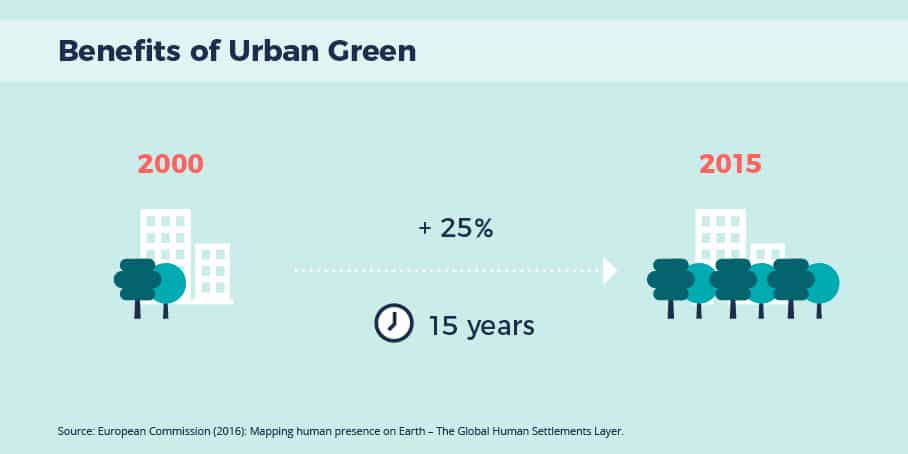
All over the world, city centres are becoming greener. Between 2000 and 2015, the share of urban green has increased by 25 percent.
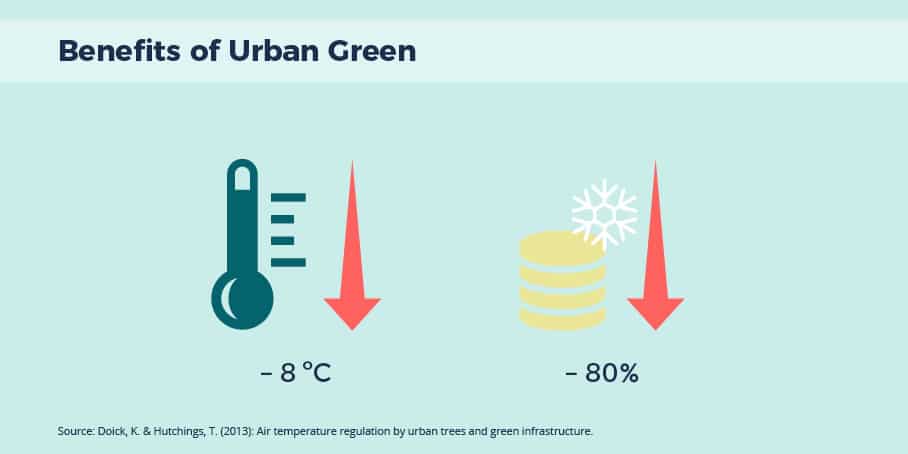
Urban green spaces can cool the air in their direct surrounding by 2 to 8 degree Celsius. This cooling effect can reduce air-conditioning costs by up to 80 percent and help avoid heat-related premature human deaths.
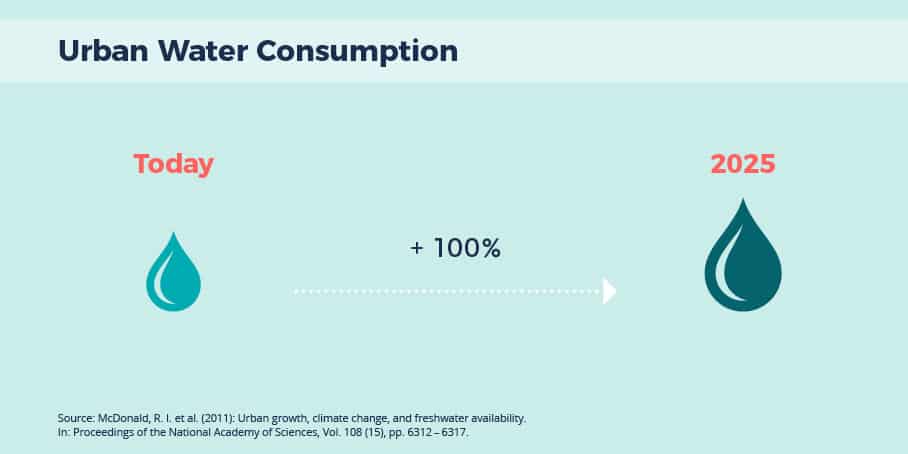
Urban water consumption is likely to double by 2025, increasing the already high pressure on freshwater resources and climate-sensitive ecosystems.
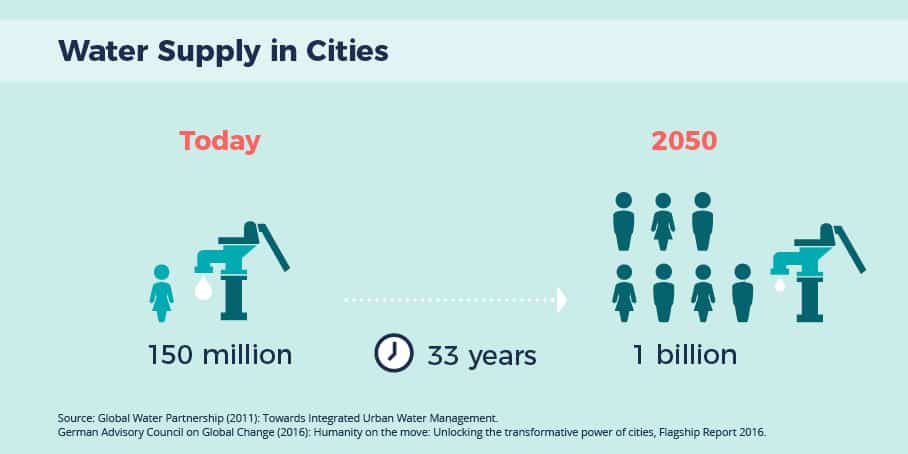
Today, 150 million urban dwellers live without adequate water supply. By 2050, urban population growth will increase this figure to almost 1 billion people. An additional 100 million urban residents will suffer from water shortage caused by effects of climate change.
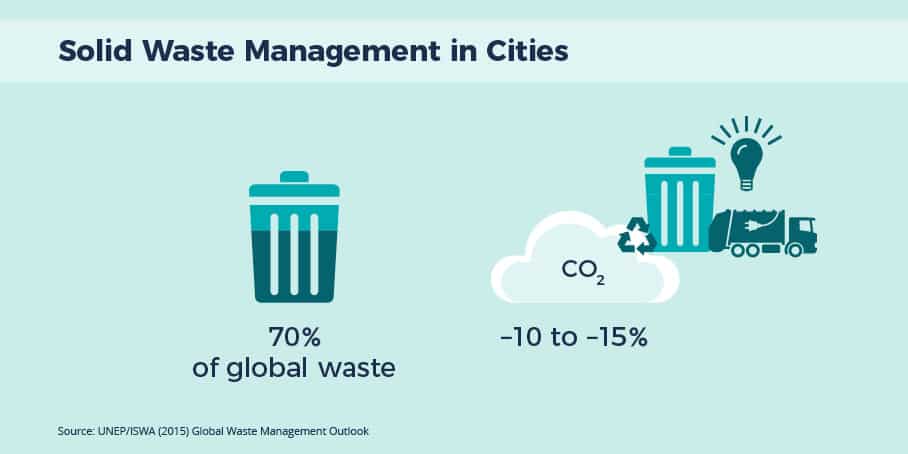
Today, human settlements produce approximately 70 percent of global waste. However, circular economy approaches and improved municipal solid waste management, including increased recycling, energy recovery from waste, as well as more efficient waste transport could reduce global greenhouse gas emissions in the urban waste sector by 10 to 15 percent.
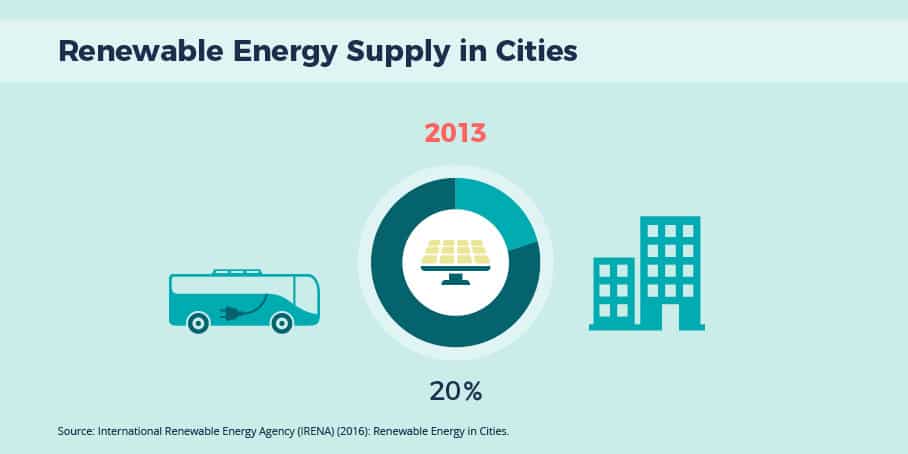
In 2013, renewable energy sources supplied about 20 percent of all building and transport related energy in cities. Cities are therefore driving actors in promoting innovative solutions and transforming pathways.
